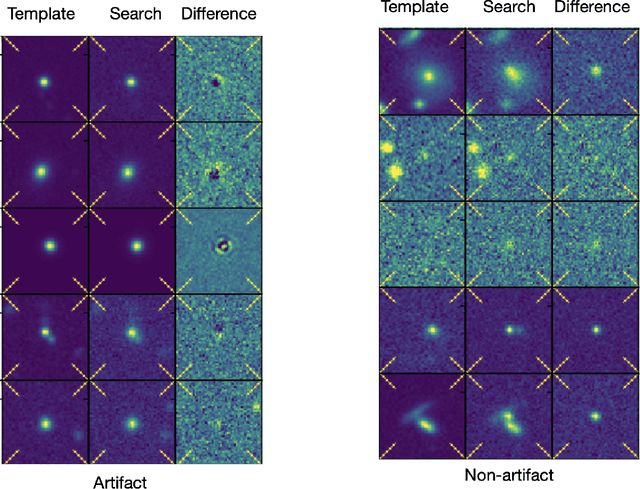Identifying Transients in the Dark Energy Survey using Convolutional Neural Networks
Paper and Code
Mar 18, 2022



The ability to discover new transients via image differencing without direct human intervention is an important task in observational astronomy. For these kind of image classification problems, machine Learning techniques such as Convolutional Neural Networks (CNNs) have shown remarkable success. In this work, we present the results of an automated transient identification on images with CNNs for an extant dataset from the Dark Energy Survey Supernova program (DES-SN), whose main focus was on using Type Ia supernovae for cosmology. By performing an architecture search of CNNs, we identify networks that efficiently select non-artifacts (e.g. supernovae, variable stars, AGN, etc.) from artifacts (image defects, mis-subtractions, etc.), achieving the efficiency of previous work performed with random Forests, without the need to expend any effort in feature identification. The CNNs also help us identify a subset of mislabeled images. Performing a relabeling of the images in this subset, the resulting classification with CNNs is significantly better than previous results.
 Add to Chrome
Add to Chrome Add to Firefox
Add to Firefox Add to Edge
Add to Edge